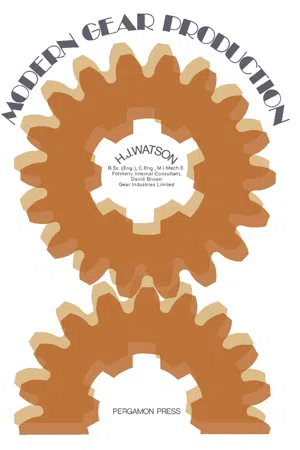
- 592 pages
- English
- PDF
- Available on iOS & Android
About This Book
Advances of Physiological Sciences, Volume 23: Neurobiology of Invertebrates: Mechanisms of Integration covers the proceedings of the satellite symposium held in conjunction with the 28th International Congress of Physiological Sciences. This text is comprised of 31 chapters and discuses several topics relevant in understanding the neurobiological nature of invertebrates. Topics include cellular mechanisms and neural network of circadian clock in the eye of Aplysia and electrical activity and hormonal output of ovulation hormone producing neuroendocrine cells in Lymnaea stagnalis (Gastropoda). Properties of postsynaptic potentials in the bimodal pacemaker neuron of Helix pomatia L. are also discussed. This book will be of great interest to researchers whose work concerns the neurobiological functions of invertebrates.
Frequently asked questions
Information
Table of contents
- Front Cover
- Neurobiology of Invertebrates: Mechanisms of Integration
- Copyright Page
- Table of Contents
- CHAPTER 1. INTRODUCTORY REMARKS. INTEGRATION IN INVERTEBRATE NERVOUS SYSTEMS
- CHAPTER 2. CELLULAR MECHANISMS AND NEURONAL NETWORK OF A CIRCADIAN CLOCK IN THE EYE OF APLYSIA
- CHAPTER 3. PEPTIDERGIC CELLS IN LYMNAEA STAGNALIS (L)
- CHAPTER 4. ELECTRICAL ACTIVITY AND HORMONAL OUTPUT OF OVULATION HORMONE PRODUCING NEUROENDOCRINE CELLS IN LYMNAEA STAGNALIS (GASTROPODA)
- CHAPTER 5. PROPERTIES OF POSTSYNAPTIC POTENTIALS IN THE BIMODAL PACEMAKER NEURON OF HELIX POMATIA L
- CHAPTER 6. A PRELIMINARY REPORT ON THE REGULATORY MECHANISMS OF THE ANTAGONISTIC RADULAR MUSCLES
- CHAPTER 7. INTEGRATION OF CHEMOSENSORY AND MECHANOSENSORY INFORMATION IN THE NERVOUS SYSTEM OF APLYSIA
- CHAPTER 8. INTERACTIONS OF SENSORY SYSTEMS AND ORIENTATION BEHAVIOUR IN LYMNAEA STAGNALIS (L.)
- CHAPTER 9. HYDRATION RELATED BEHAVIOR AND THE EFFECTS OF OSMOTIC STRESS ON MOTOR FUNCTION IN THE SLUGS LIMAX MAXIMUS AND LIMAX PSEUDOFLAVUS
- CHAPTER 10. INTERRELATED NETWORKS IN REGULATION OF VARIOUS FUNCTIONS IN GASTROPODA
- CHAPTER 11. HIGHER ORDER INTERNEURONS WHICH INITIATE AND MODULATE FEEDING IN THE POUND SNAIL LYMNAEA STAGNALIS
- CHAPTER 12. NEURAL CONTROL OF BUCCAL MASS ACTIVITY IN APLYSIA
- CHAPTER 13. INTEGRATIVE PROPERTIES OF A SYMMETRICAL PAIR OF COUPLED CEREBRAL GIANT NEURONS INVOLVED IN THE CONTROL OF FEEDING IN THE SNAIL LYMNAEA STAGNALIS
- CHAPTER 14. PLASTICITY OF FEEDING RESPONSES EMITTED BY ISOLATED BRAIN OF A TERRESTRIAL MOLLUSC
- CHAPTER 16. BEHAVIOURAL EFFECTS OF MORPHINE ON THE LAND SNAIL HELIX POMATIA. DEMONSTRATION OF TOLERANCE
- CHAPTER 17. BEHAVIOURAL AND NEURONAL EVIDENCE FOR CONDITIONED FEAR IN APLYSIA
- CHAPTER 18. NEURAL AND MOLECULAR MECHANISMS OF FOOD-INDUCED AROUSAL IN APLYSIA CALIFORNICA
- CHAPTER 19. ΜΕCHΑΝΙSΜS UNDERLYING PATTERN GENERATION IN THE LOBSTER STOMATOGASTRIC GANGLION
- CHAPTER 20. NEURAL MECHANISMS OF CENTRAL PATTERN GENERATION IN THE CRAYFISH SWIMMERET SYSTEM
- CHAPTER 21. COMPLEX INTEGRATIVE FUNCTIONS IN CRUSTACEAN MOTOR NEURONS
- CHAPTER 22. PROTO-TRITOCEREBRAL AREAS AND THE CONTROL OF THE TYPICAL NOCTURNAL HABITS OF THE CIRCADIAN ACTIVITY OF THE CRAYFISH EYE
- CHAPTER 23. NEUROHORMONES AND CONTROL OF PHYSIOLOGICAL PROCESSES IN CRUSTACEA
- CHAPTER 24. A DIURNAL RHYTHM OF RHABDOM SIZE IN LOCUST AND MANTIS COMPOUND EYES
- CHAPTER 25. TASTE RECEPTION BY MAXILLARY PALPS OF THE MIGRATORY LOCUST
- CHAPTER 26. SUGAR RECEPTORS IN THE LABELLAR TASTE HAIRS OF THE FLY
- CHAPTER 27. A NEUROETHOLOGICAL ANALYSIS OF SOUND PRODUCTION IN THE ACRIDIO GRASSHOPPER OMOCESTUS VIRIDULUS
- CHAPTER 28. MOTOR CONTROL BY PLURISEGMENTAL INTERNEURONS IN THE LOCUST
- CHAPTER 29. FUNCTIONAL ORGANISATION OF INSECT GANGLIA
- CHAPTER 30. TRANSMISSION OF WIND INFORMATION ON THE HEAD OF THE LOCUST TO FLIGHT MOTOR NEURONS
- CHAPTER 31. CONCLUDING REMARKS. THE STATE OF THE ART AS ILLUSTRATED BY THIS SYMPOSIUM AT TIHANY
- INDEX